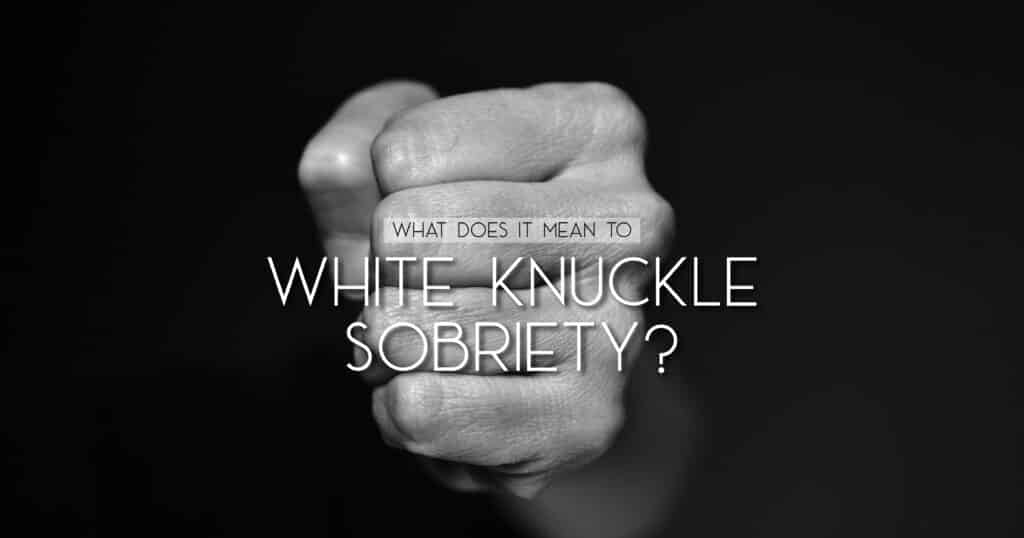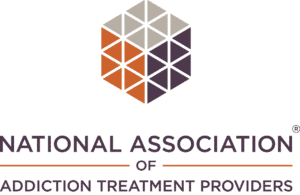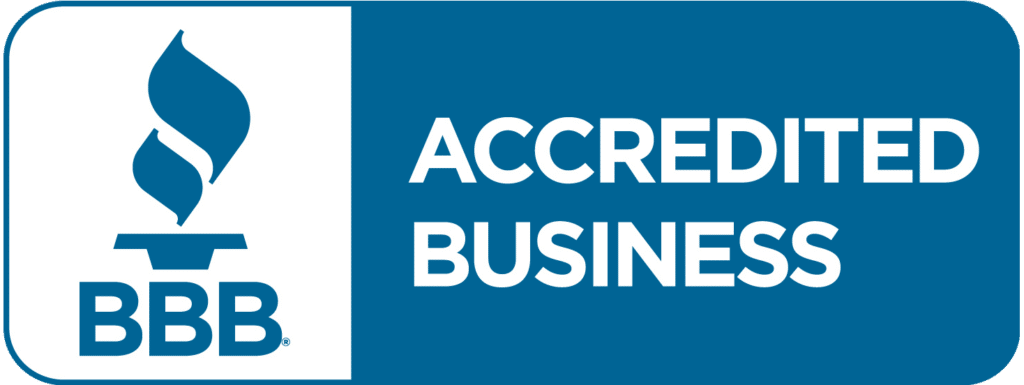What Does it Mean to White-Knuckle Sobriety?

White-knuckle sobriety is the struggle to stay sober in the absence of professional treatment. It is a difficult but achievable goal that requires overcoming the cravings and temptations of drug addiction. You’re attempting to fix yourself with your mind or willpower.
Some people who are trying to recover say they will keep themselves busy. They claim that they will not drink regardless of what happens, or that they will hire a personal trainer and exercise more. These attempts to get sober without professional assistance or support may not be successful in maintaining sobriety.
Attempts to become sober through sheer force may assist someone in becoming healthier. It will not, however, address the underlying causes of the addiction problem. To reduce the risk of relapse, most people need to find healthy coping mechanisms and support.
People who attempt to recover from substance abuse without treatment or support rely on willpower to do so. These people may find it difficult to stay sober in their daily lives. To improve their behavioral and mental health, people in recovery must collaborate with peers, professionals, and loved ones.
History of White-knuckling
Clamping a rail or an object to avoid succumbing to temptation gave rise to the term. People miss out on the opportunity to heal by simply not drinking or using.
White-knuckling can be traced back to the development of addiction recovery centers and specialty addiction counseling. Many people were suffering from addictions at the time, but they had limited access to support and treatment. As a result, many people have turned to willpower to help them overcome their addictions.
White-knuckling was the first term used to describe this act of willpower. The phrase has recently gained popularity as more people become aware of the dangers of addictive behavior. It is now commonly used to describe people who are attempting to overcome an addictive behavior or routine without seeking professional assistance.
Avoidance of Drugs & Alcohol
Abstinence means abstaining from all drugs and alcohol, and it is an effective tool for avoiding addiction. Abstinence from alcohol and other drugs has numerous advantages. When someone decides to recover from substance abuse, they may reap some of these benefits.
They include the following:
Well-Being, Both, Physical & Mental
The preservation of physical and mental well-being is possibly the most important. The use of alcohol and other drugs on a regular basis can harm the body’s organs, including the heart, liver, and brain. Abstinence from alcohol and other drugs can aid in the protection of these organs, lowering the risk of long-term health problems.
Controls Psychological Issues
Alcohol and drugs can have a significant impact on a person’s mood and behavior, putting them at risk for depression, anxiety, and even suicidal ideation. Avoiding these drugs can help alleviate the symptoms of psychological issues and even prevent them from occurring in the first place.
Helps Individuals in Saving Finances
Abstinence can also help a person’s finances. Regular use of these drugs can be costly and financially draining. People who avoid these substances can reduce their spending and save more money for other financial priorities.
What is a “Dry Drunk”?
A “dry drunk” is a sober person who still exhibits the same addictive behavior patterns, thoughts, and negative emotions. This phrase is frequently used to describe people who have recently stopped drinking but have made little progress in their recovery. They have yet to develop healthy, effective coping mechanisms and may be dealing with the same issues that drove them to drink.
Dry drunks are frequently trapped in the same negative thought patterns that cause them to become inebriated. They are easily irritated and argumentative, struggle to interact, and may continue to engage in risky behaviors. A dry drunk may think and speak about alcohol as if they are still drinking.
The Signs & Symptoms of a Dry Drunk
A dry drunk may exhibit a variety of signs and symptoms, some of which are as follows:
• Difficulty adjusting to daily life: Because they have become accustomed to relying on drugs or alcohol to cope with stress, dry drunks frequently struggle to adjust to the demands of everyday life, such as personal relationships and work.
• Unhealthy behavior: They may try to cope with depression or anxiety by engaging in harmful behaviors such as bingeing, gambling, or substance abuse.
• Short temper, irritability, and mood swings: Because of their underlying distress, they may respond to situations with a short temper and be prone to mood swings.
• Isolation from friends, family, and social activities: Because they are unhappy with their skin, dry drunks may avoid social situations, leading to further isolation.
• Sense of entitlement and lack of empathy: As a result of their own pain and anguish, they may become demanding and entitled, and they may lack empathy for others.
• Difficulty making decisions and problem-solving: Dry drunks may have difficulty making decisions and problem-solving due to distorted thinking and the inability to process data clearly and logically.
Risks of White-Knuckle Sobriety
Here are some of the risks of white-knuckle sobriety:
Physical Risks
When attempting to abstain from drugs or alcohol without professional assistance, a person frequently lacks access to healthcare and support that a person in a recovery program may have. This can lead to physical risks like malnutrition, dehydration, and organ damage.
Those who practice white-knuckle sobriety are also more likely to relapse because they may not receive the same level of guidance and support as those in recovery programs.
Mental Risks
A person may experience depression, loneliness, and anxiety when attempting white-knuckle sobriety. They may be more likely to engage in self-destructive behaviors such as binge drinking or drug use to cope with the stress of sobriety.
Social Risks
White-knuckle sobriety may make it difficult to communicate with family and friends who are still drinking or using drugs. Furthermore, because of the stigma associated with white-knuckle sobriety, they may find it difficult to connect with and form relationships with other people in recovery.
Building a Strong Foundation for Lasting Recovery
White-knuckle sobriety can be challenging, but it is possible to lay the groundwork for long-term recovery. White knuckling can be transformed into a meaningful and long-term recovery by individuals. Sobriety is a courageous step; with the right strategy, people can find the support and courage they need to resist temptation.
We offer a comprehensive treatment plan that combines evidence-based therapies with holistic practices at Silicon Valley Recovery. We design a program that is tailored to each individual’s specific needs.
Contact us today to begin your recovery journey and learn how to live a sober life.
FAQs
What does white knuckling mean?
White knuckling refers to the act of holding on tightly to something, often due to stress, fear, or anxiety. It is commonly used to describe a situation where someone is trying to maintain control or endure a difficult situation without seeking help or using coping strategies. The term originates from the way one’s knuckles can turn white from gripping something too hard.
What is the hardest stage of sobriety?
The hardest stage of sobriety often varies for each individual, but many find the initial phase, typically the first 30 to 90 days, to be the most challenging. During this time, individuals may face intense cravings, withdrawal symptoms, and emotional upheaval as they adjust to life without substances. Building a support system and developing coping strategies are crucial during this period to maintain sobriety.
What is a white chip in sobriety?
A white chip in sobriety, often called a surrender chip, is a token given to individuals in recovery programs like Alcoholics Anonymous. It symbolizes a commitment to sobriety, marking the decision to stop drinking or using drugs. The white chip is typically the first chip received, representing a fresh start or a new beginning in the journey towards recovery.
What is the white knuckle technique?
The white knuckle technique is a method used to maintain control and composure in high-stress situations. It involves gripping the steering wheel tightly, focusing intently on the task at hand, and using deep breathing to stay calm. This technique is often employed by drivers in challenging conditions to ensure safety and precision.
What is white knuckling addiction?
White knuckling addiction refers to attempting to quit or manage an addiction without professional help or support systems. It involves relying solely on willpower to resist urges, often leading to increased stress and a higher risk of relapse. This approach can be challenging and may not address underlying issues, making it less effective than comprehensive treatment options.
What is an example of a white-knuckle ride?
A white-knuckle ride is a thrilling and intense experience, often associated with amusement park rides that induce fear and excitement. Examples include roller coasters with steep drops, high speeds, and sharp turns, such as the Kingda Ka at Six Flags Great Adventure or the Top Thrill Dragster at Cedar Point. These rides are designed to push adrenaline levels and provide a heart-pounding adventure.










